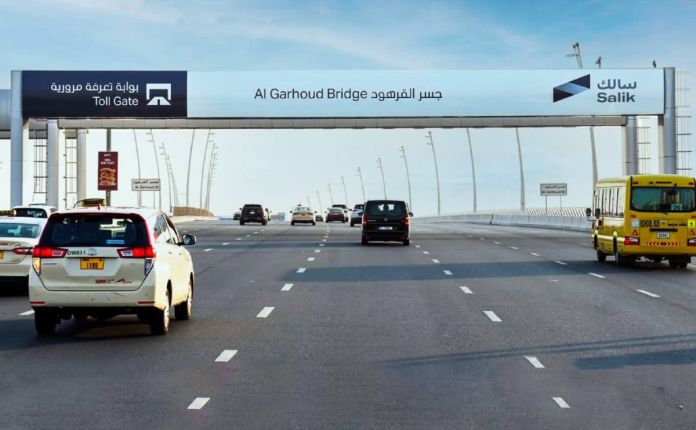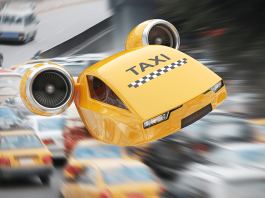The lasting impact of more toll gates and dynamic pricing could take a decade to be felt in Dubai, according to an expert. “There is a correlation between increasing toll gates, better air quality, and lesser accidents,” said Dr Khaled Alawadi, associate professor of Sustainable Urbanism at Khalifa University.
“However, for toll gates to reduce the number of cars on the road, residents must be provided with good alternatives in terms of mass transport systems. This could take a decade or even two to be felt in the city,” added Dr Khaled.
Local residents, however, are already beginning to feel a difference in the traffic flow since Salik introduced dynamic pricing earlier this year and two new toll gates in November last year.
Salik introduced dynamic toll pricing on January 31 this year, with motorists having to pay Dh6 fee during morning and evening peak hours and Dh4 on off-peak hours during weekdays.
Mohammed Iqbal, whose work in Dubai Media City starts at 6am, is among those who benefit from the new pricing. “I have two Salik gates on my way to office but I pass through them before 6am,” he said. “The new dynamic pricing means I get free trips one way. So I am really happy about the changes.”
With Salik’s dynamic toll pricing, the fee is free from 1am to 6am. On Sundays, excluding public holidays, special occasions, or major events, the toll is Dh4 throughout the day.
“I have noticed that the traffic on the road has increased before 6am due to the new pricing as people are trying to clear the toll gates before the charges kick in,” Mohammed added.
Sanjana K.A., who lives in Karama, shared how the dynamic pricing helped her save time when she was running late for a meeting in Dubai Marina. “I took the Safa and Barsha toll gates and I was surprised at how smooth flowing the traffic was. I was able to reach my destination ahead of time. But my Salik cost has increased since the changes were introduced.”
Heavy traffic
Some communities have experienced an uptick in traffic because of the new Salik toll systems. Ayesha Nawaz, who lives in Dubai Creek Harbor, said she’s observed an increase in traffic in her community due to commuters looking to avoid the toll gate on Business Bay bridge.
“The situation in the evening is pretty bad,” she said. “Many people take a short cut to Deira, Rashidiya or Sharjah through our community. They get in through the Ras al Khor road and then leave through the Festival City exit. Those in the community are spending 20 minutes or more for routes that used to take us 5 to 8 minutes.”
Muhammad Anshah, who lives in Jumeirah 1, said that he was stuck in traffic for more than an hour on first day of the dynamic pricing on January 31. “It was a nightmare as many people thought it would be a good idea to take Jumeirah roads to avoid Salik,” he said. “However, within a day or two, it settled down. The traffic is heavier than before in Jumeirah but not the gridlock that it was on the first day.”
In November 2024, the Roads and Transport Authority (RTA) introduced two new toll gates in Business Bay and Safa, taking the total number of gates up to 10.
The RTA noted that the goal was to encourage public transport use and redistribute traffic to alternative routes, such as Sheikh Mohammed bin Zayed Road, Dubai-Al Ain Road, Ras Al Khor Street, and Al Manama Street. Motorists were also encouraged to use alternative Creek crossings, such as Infinity Bridge and Al Shindagha Tunnel.
Public Transport
According to Dr Khaled, Dubai is doing a good job with ensuring public transport connectivity for residents, but more efforts were required to decrease people’s dependence on private vehicles. “My team studied mass transit systems in seven GCC cities and Dubai came in second with almost 78 percent serviced by public transport,” he said. “The future metro lines are perfectly placed to cater to an increasing population.”
He also noted that more studies are needed to be done on people’s travel behaviours. “We don’t have data on people’s travel behaviour,” he said. “Many travel between two fixed destinations while others make chain trips like going to work from home, then picking up kids form school and doing grocery shopping. If their daily routine includes chain trips, there is a lesser possibility of them using public transport.”
He also underlined that it is important for transit zones — or points where people can access public transport — to be within 300 to 500 meters in highly congested areas. “We live in a hot country and it is not convenient for people to walk long distances,” he said. “If there is a transit zone which is just a seven-minute walk from where are they are, they are more likely to use mass transport systems. Areas like Creek and Al Fahidi are very well shaded and have transit zones in close proximity.”



